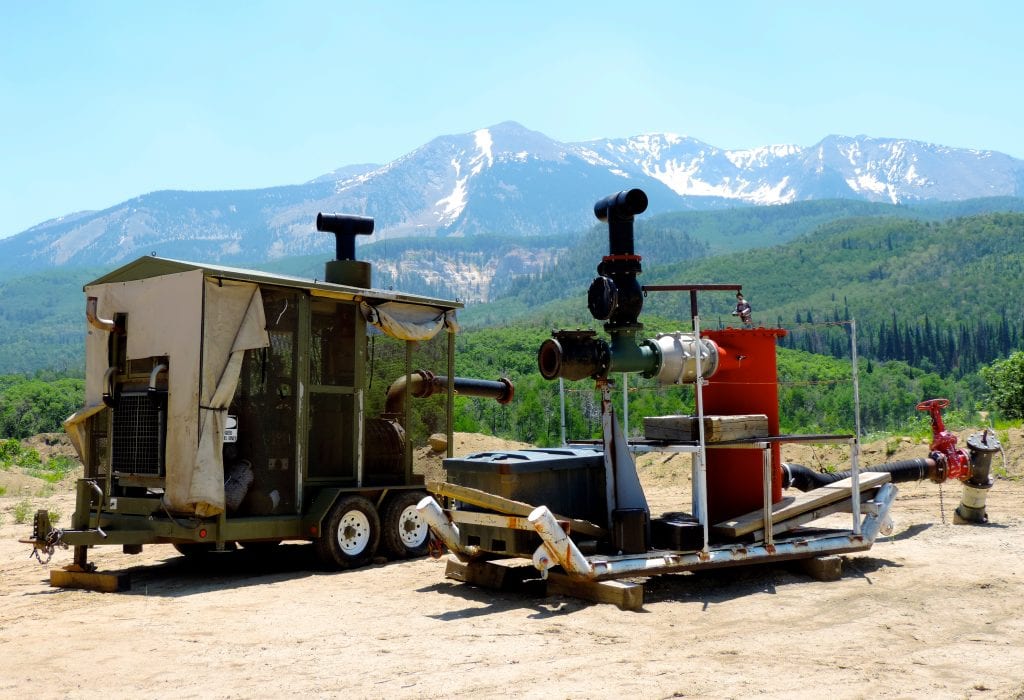This week, we took aim at Arch Coal’s West Elk mine in western Colorado and the company’s failure to keep its air pollution in check consistent with state and federal law.
The effort stands to hold underground coal mines across the country accountable to safeguarding clean air and limiting their methane releases.
In an appeal field with the U.S. Department of the Interior’s Board of Land Appeals, we challenged the U.S. Office of Surface Mining for turning its back on Arch’s illegal air pollution and refusing to enforce federal coal mining laws.
At issue is the venting of methane at the West Elk mine. While methane is a dangerous gas that has to be blown out of the mine for safety reasons, the West Elk mine has so much methane that Arch has to drill wells above the mine and vent the gas into the air.
The practice has literally turned the lands above the West Elk mine into a gas field with wells and roads covering the landscape. So, even though the mine is underground, it’s effectively despoiled the surface above the mine.
Given that the surface is mostly National Forest, it’s been a huge blow to our public lands in western Colorado.
And because of Arch’s venting, the West Elk mine is actually the single largest source of methane emissions in the State of Colorado according to data reported to the U.S. Environmental Protection Agency.
Experience for yourself what methane venting is like, click here >>
Given that methane has 86 times more heat-trapping capacity than carbon dioxide, that’s a big deal for the climate. And it makes the West Elk mine an especially dirty and wasteful operation.
Not only is coal from the mine burned, producing massive amounts of carbon pollution, but the mine is also belching massive amounts of climate destroying methane.
In other words, the West Elk mine truly takes climate destruction to a whole new disturbing level.
It doesn’t end there, however. While the gas stream being vented by Arch mostly consists of methane, it also consists of small amounts of other organic gases called volatile organic compounds, or VOCs. These VOCs include gases like benzene, propane, toluene, and others.
Many of these VOCs are actually tightly regulated under the Clean Air Act. Not only are many VOCs incredibly toxic, but VOCs also contribute to the formation of ground-level ozone, otherwise known as smog.
At a minimum, these VOCs can’t be released without proper permits, reducing emissions, and without reporting these emissions to air quality regulators.
In spite of this, Arch has yet to obtain any permits or report its VOC emissions to state and federal air quality regulators, a situation that has prompted Colorado air inspectors to find the company in violation of state and federal clean air laws (although unfortunately, state air regulators have yet to take enforcement action).
Read for yourself the most recent air inspectors’ report.
These clean air violations also mean that Arch Coal is violating its coal mining permit, which requires the company to comply with all state and federal air quality laws and regulations.
Given this, last October, Guardians filed a complaint with the U.S. Office of Surface Mining calling on them to take enforcement action over Arch’s violations of its mining permit.
Unfortunately, the Office of Surface Mining denied our complaint in April. So, we appealed to the Interior Board of Land Appeals. Our hope is to overturn the agency’s rejection and actually secure some clean air accountability as Arch continues to mine.
In the meantime, the stakes around this issue extend far beyond just the West Elk mine of Colorado.
Looking at methane emissions from underground coal mines across the country, the issue of unchecked VOC emissions involves nearly 100 other mines in the U.S., including some of the largest mines in Appalachia.
Using data reported to the Environmental Protection Agency, we actually mapped out methane emissions from underground coal mines and estimated their potential VOC emissions, check out the interactive map below.
What we found is that West Elk is just the tip of the iceberg. Dozens of other mines seem to be major problems due to their methane and associated VOC emissions.
Yet so far, not a single underground coal mine in the U.S. has been required to obtain permits, reduce their emissions, or otherwise report their VOC emissions.
This means that if we can secure accountability to clean air at the West Elk mine, we stand to secure accountability at underground coal mines across the country.
And it means that our appeal before the Interior Board of Land Appeals isn’t just about protecting clean air and the climate in western Colorado. It’s about protecting clean air and the climate in all coal producing regions of the U.S.



